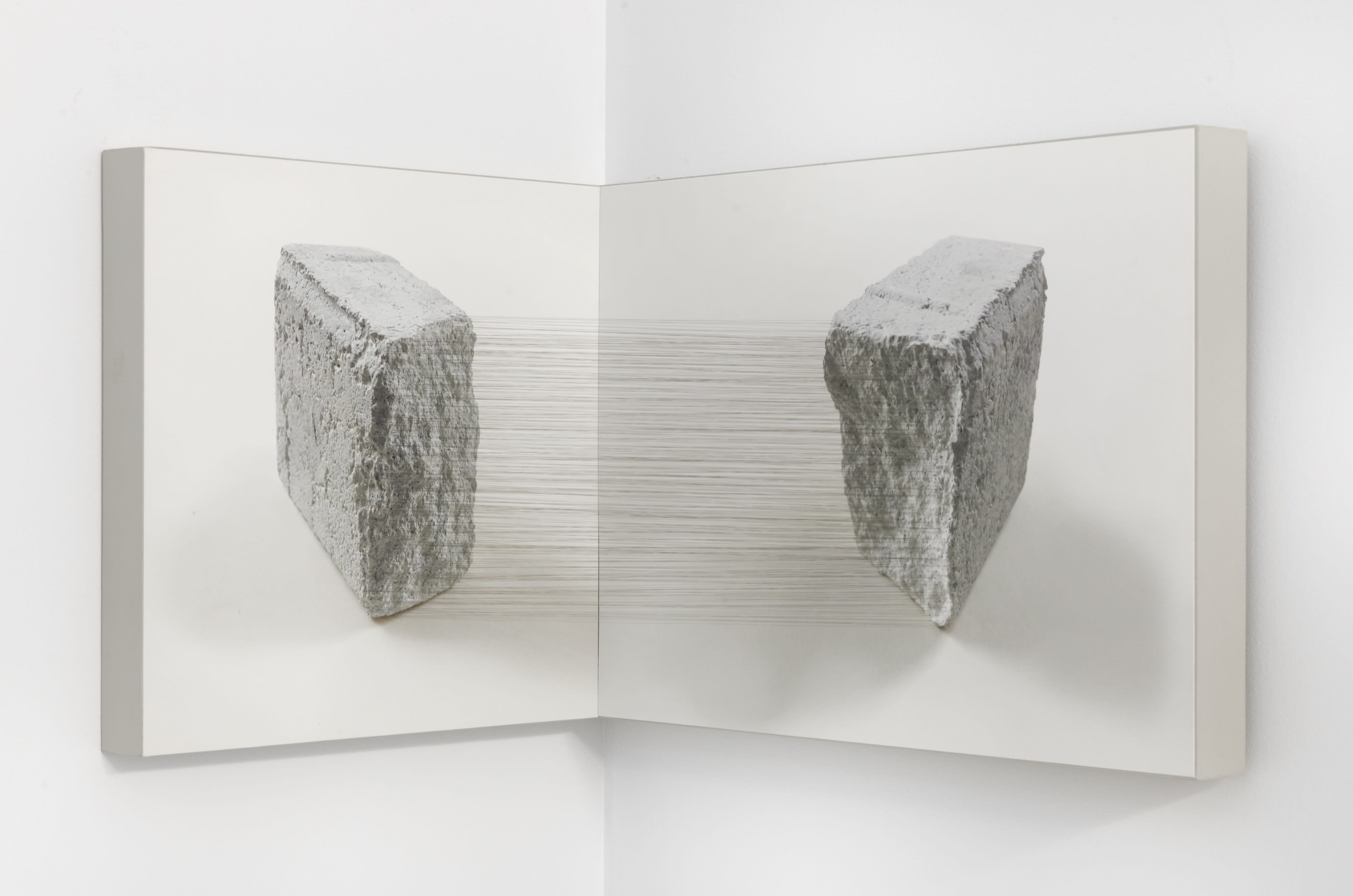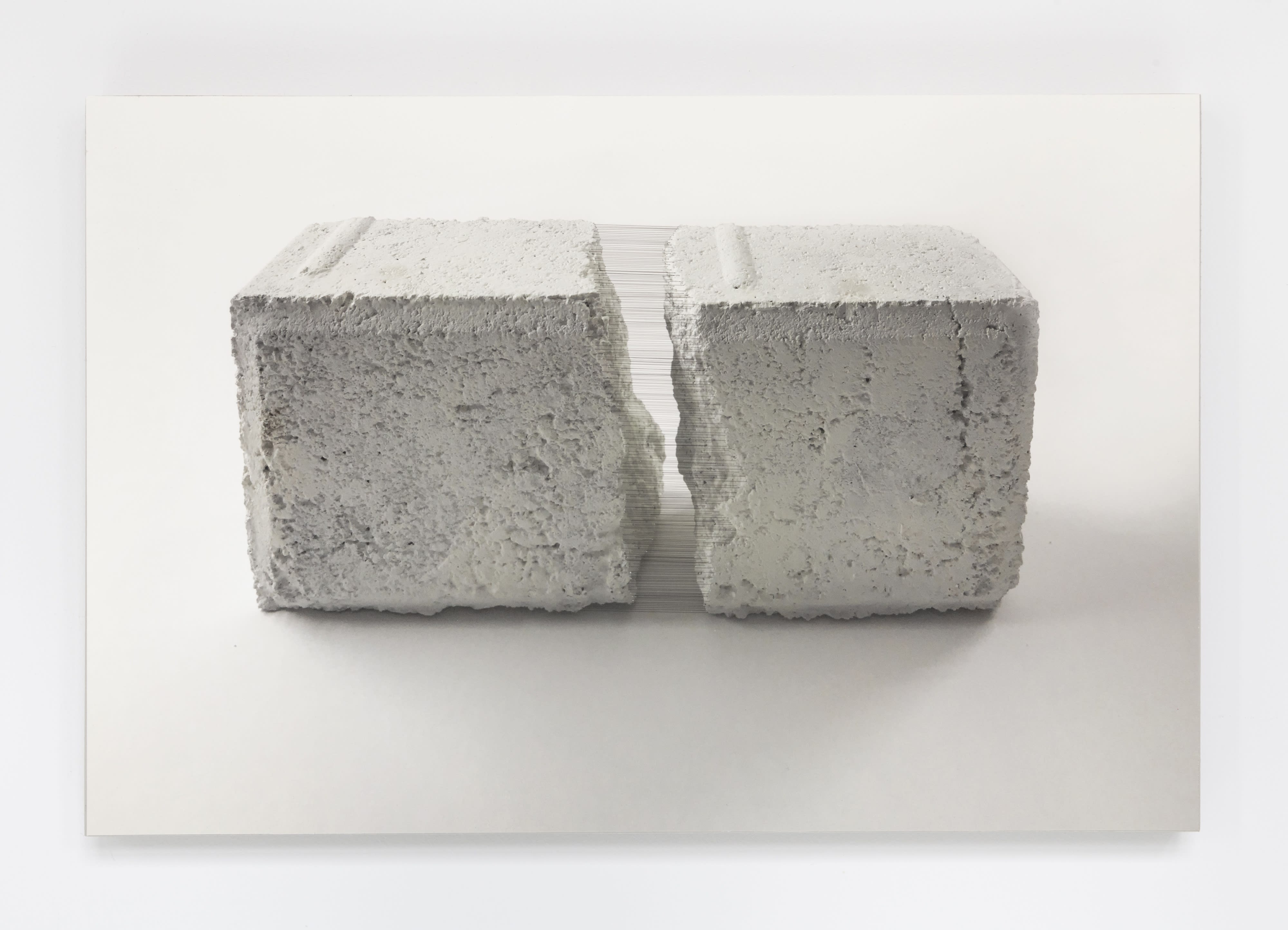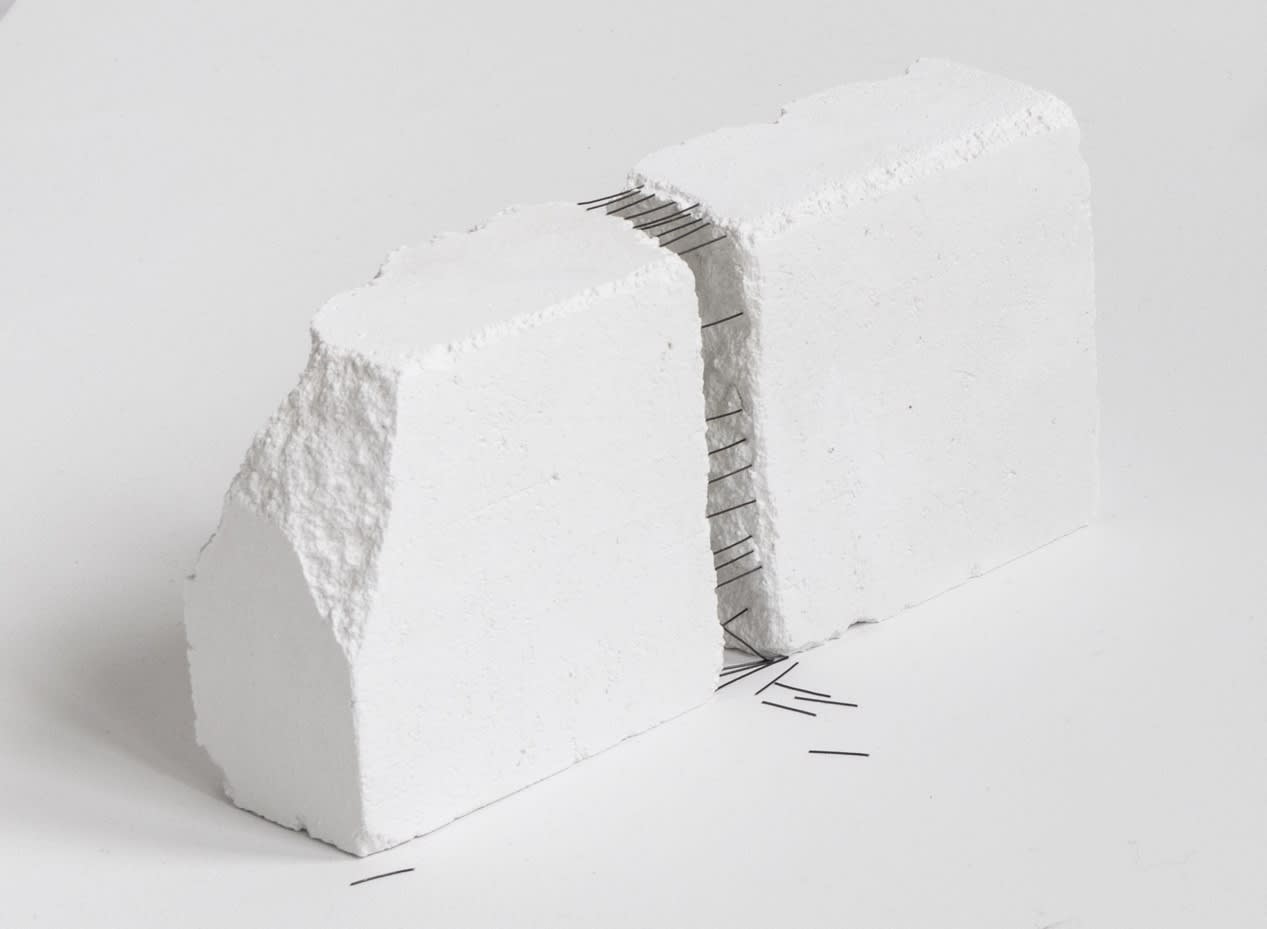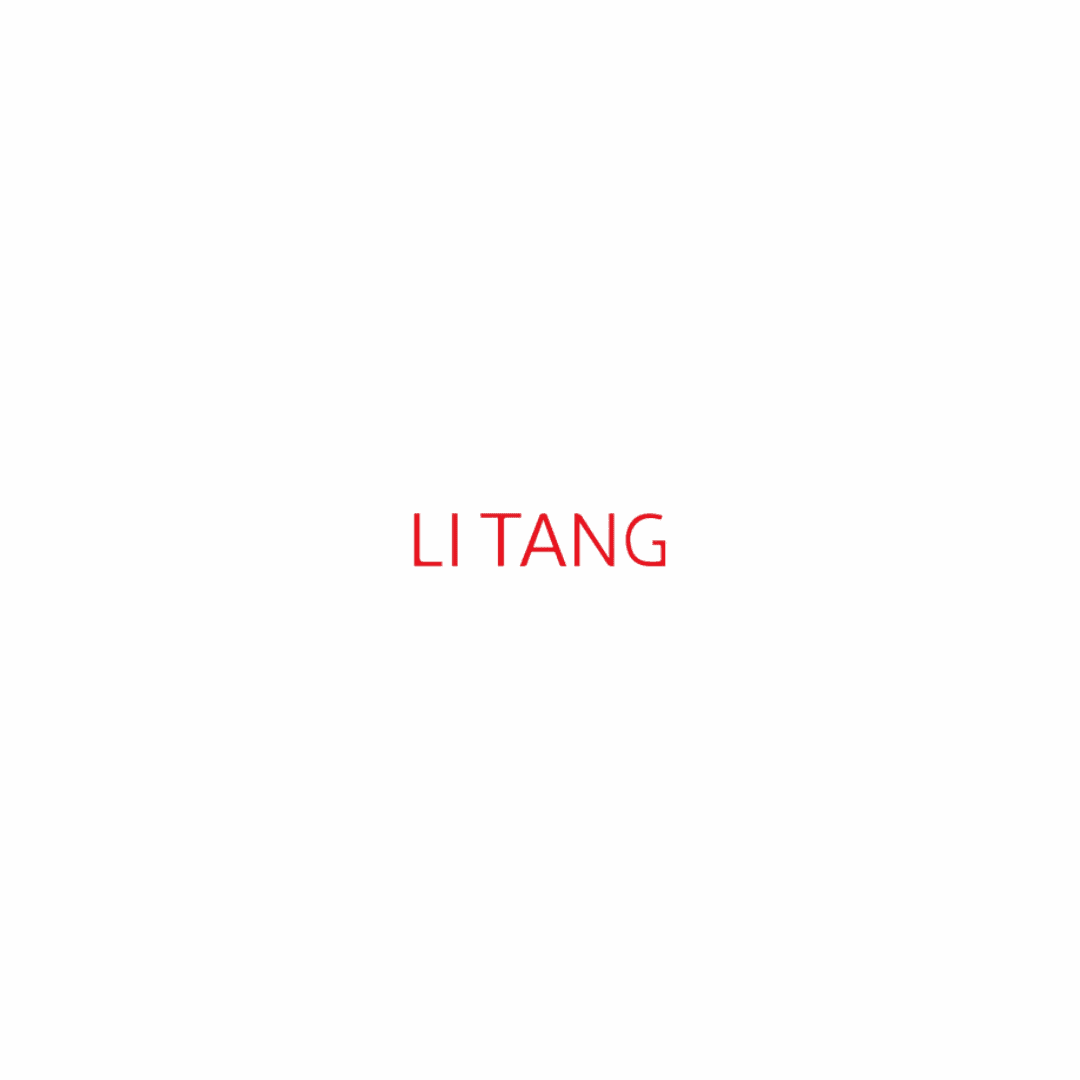Sun Young Kang (강선영) is a book and installation artist originally from South Korea. She resided in Philadelphia and Pittsburgh, PA for a decade before moving to Western New York. Kang received her BFA in Korean Painting from Ewha Woman’s University in Seoul, Korea, and her MFA in Book Arts/Printmaking from the University of the Arts in Philadelphia, PA in 2007.
Kang has exhibited her work nationally and internationally, including solo and group exhibitions at venues such as Whanki Museum in Seoul, Korea, Nanchizi Museum in Beijing, China, Queens Museum, NY, Susquehanna Art Museum, PA, Carnegie Museum of Art, PA Pennsylvania State Museum, PA, and others. In 2021, she was named the UAH Contemporary Art Fellow, funded by the National Endowment for the Arts at the University of Alabama in Huntsville, AL. She has also been the recipient of several grants and awards, including the Pollock-Krasner Foundation Grant, NY; New York Foundation for the Arts (NYSCA/NYFA) Artist Fellowship, NY; the West Collection LIFT Grant and Acquisition Award, PA and the Center for Emerging Visual Artists Fellowship in Philadelphia, PA. Her work can be found in numerous museum and library special collections.

Neither here nor there, paper tubes, motion-sensitive lights, 42’ L x 26’ W x 15.4’ H, 2017, photo by Kwon O-yeol
Thank you for joining us, Sun Young. Can you tell us a little about yourself and how the journey has been so far?
I was born and raised in a small town outside of Ulsan, Korea, and was introduced to Korean Painting by a passionate young teacher in middle school. After completing my undergraduate study in Korean Painting in Seoul, I moved to the U.S. and studied Book Arts/Printmaking in Philadelphia. This transition in focus allowed me to explore new physical dimensions and mediums while staying true to my favorite and most meaningful material, paper.
As I delved into the narrative aspect of books and the physical and metaphorical space that they offer readers, I felt compelled to create larger installations that would take viewers on a journey through the space and time I created. I have since made a range of physical spaces, from small intimate books to expansive installations that allow viewers to walk through and immerse themselves.

More recently, I have been incorporating 2-dimensional photographs, which offer yet another physical space for me to experiment with and continue my installation-making process. So, regardless of the mediums or subject matters I have explored, my aim has always been to create immersive experiences that invite viewers to engage with my works on a personal level.
What ideas are you exploring in your practice? Do you have any preferences regarding materials or approaches in your projects?
My art explores the duality fundamental to human existence: of different realities or worlds both in space and time and the tension between them; and of the coexistence of antithetical ideas, such as how death implies life, how the material realm implies the unsubstantial or nonphysical, and how absence implies presence. To explore this, I visualize the invisible, the space in between, the boundary that, while separating the two, connects them in that one implies the other. As an immigrant artist attempting to bridge two cultures, that boundary has a personal and emotional resonance for me.

The Endless Line (installation view at Sia-long Cultural Park, Taiwan), Cotton thread, sugar powder, mirror sheet, 50’ L x 35’ W x 13.7’ H, 2017
Materials play an important role in my work. They frequently suggest my theme as is, rather than as a material to create something else. I rarely use images or colors in my work; instead, I combine the symbolic or metaphoric meanings of each material with my narrative and repetitive physical gestures (which represent time passing or time made spatial) during the process to convey my ideas to viewers.

Filtered Memories, incense-burning on paper rolls, transfer print, water bowl, 38.5’ L x 20’ W x 12.5’ H, 2007
Since I began Korean Painting, paper has been my primary material, as it embodies the physical duality of being both fragile and incredibly strong, with two sides existing within one space. This duality serves as a powerful metaphor for me, which I have applied to create a range of structures such as folding screens and hanging scroll books, emphasizing the coexistence of antithetical ideas that are forever separated. Paper boxes that I incorporate in my work symbolize invisible spaces and emptiness, which often carry more significance than visible spaces. Additionally, paper tubes that act as boundaries dividing the inside from the outside while also as passages connecting the two spaces are another way I explore this duality. I also use discarded paper to make pulp and cast everyday vessels, visualizing the invisible, parallel to the visible world. Sometimes, I deconstruct the original identity of the vessels by installing them upside-down to highlight their void, while in other instances, I fill empty gallery spaces with empty vessels, visualizing the non-visual and articulating a non-describable concept – the inseparability of presence and absence and the tension between them.

In Between Presence and Absence: Expectation and Perception (installation view at Wilson Gallery, UAH), paper-cast using recycled pulp made from discarded paper, board, black-out curtain, 45′ W x 21′ Lx 9’ H, photo by José Betancourt
Other materials I use have metaphorical meanings as well; for example, thread represents connectivity and continuity, while my own shed hair represents memory loss, weakened or lost connection, detachment, and longing. Thread and my hair frequently create both tangible and intangible qualities in my work that represent human existence in time. In my installations, the floating needles represent tension, longing, and a fragile but powerful force. When a brick is broken, it loses its original identity; however, it now contains the gap, which becomes a new space.

I consider audiences to be key to my work because I believe that one of the most important roles of art is to elicit emotional connections and empathy. Sharing a physical or metaphorical space of my work with the audience is my way of doing so. Thus, I encourage audiences to immerse themselves in the space I create, allowing them to dwell in uncertainty while being a part of the space, which exists as an experiential metaphor passing between opposites.
How do you define “success” in art?
I believe that success should not only be measured by external recognition and commercial gain but also by personal growth and satisfaction. Despite the difficulties I faced when my child was young and I had a separate job, I consider myself successful for continuously creating and publicly sharing my art. I am grateful for the support and opportunities that have come my way every year. However, I feel that I am far behind in terms of commercial success or fame compared to other artists. It is natural to compare oneself to others in the art world, but this can have a negative impact on self-esteem and motivation.
For me, success is a journey that includes setbacks and challenges. It is not just about meeting societal expectations or receiving external validation but also about enjoying the creative process and continually growing as an artist. I think the journey of becoming a mature artist is very difficult, considering the uncertainties of this profession and the competition in the art world.
I believe that ultimately, I will be a successful artist if I continue making art and sharing it with people until the end, regardless of whether I achieve commercial success or fame or not.

6973 miles of force in 1cm (detail view of the installation at Artspace O, Seoul, Korea), cotton thread, sewing needles, magnets, library board, paper, 23.5’ W x 31’ L x 6.5’ H, 2019, photo by Jeong Hyun Kim
You’ve been very active during the past few years. What is the most exciting project you’ve accomplished so far?
I’m glad you see me active because I often feel like my studio practice progresses slowly. However, I attribute this to preparing for annual exhibition travel and large-scale installations in distant locations, which require extensive preparation beforehand. Each project holds significant meaning for me, as they often lead to the next project, and every experience of sharing my work in different places and times is unique. So, answering the question is very difficult.
The UAH Contemporary Art Fellow exhibition/residency in 2021 (funded by the National Endowment for the Arts through the University of Alabama in Huntsville, AL) was one of my unforgettable events. It was postponed twice due to the pandemic. Two years after the initial invitation, when it finally took place, it was not only my first time traveling, but also my first time working with a large group of people since the pandemic started. Despite initial difficulties, everything that seemed impossible during the pandemic became a reality. I made many new friends among faculties, students, and local artists from the community, and we collaborated closely to create a large installation space that could have never been possible without such support. Through this process, I was able to interact with people again and experience the joy of in-person collaboration, which meant even more after the challenges of 2020. This installation also led to another incredible opportunity to create a new challenging installation with the same body of work as a part of the project Whereabouts of the Kendal College of Art and Design of Ferris State University, MI and is currently on display in (the former) Urban Institute of Contemporary Arts’ lobby space.


Another project I must add is the series Impossibly Connected, which holds great importance to me. This project was born out of my personal grieving process over the illness and passing of my mother in Korea. Through this project, I delve into my feelings of lost or weakened connection to my home and longing for it as well as living between two cultural realities, attempting to reconcile two identities, and the conflict between the past and the future in which we exist. This series involves a new experiment using photography to create a smaller-scale installation within the space of photography. It was an attempt to overcome the challenge of not being able to create installations in public spaces during isolation. Working in a smaller space allowed me to convey my personal emotions more intimately, and the process of making it has become a personal mending or healing process. I will continue to integrate different dimensions and objects and I am very excited to see where this project will take me.
 6973 miles of force in 1cm/ Impossibly Connected (Installation view at YI Gallery, New York), 2023, photo by Adam Reich, courtesy of YI GALLERY
6973 miles of force in 1cm/ Impossibly Connected (Installation view at YI Gallery, New York), 2023, photo by Adam Reich, courtesy of YI GALLERYWhat does “community” mean to you? How do you see yourself in a community?
I strongly believe that a community is not bound to a specific location. As someone who travels frequently, I actively seek out opportunities wherever they may be, whether in my immediate surroundings or on the other side of the world. Consequently, my community as an artist is primarily centered around my exhibitions and collaborations.
In many cases, I have received invaluable support from institutions such as museums, universities, other nonprofit organizations, and galleries. The communities surrounding these institutions have become my art community. Through physical interaction and sharing my work with them, I have gained inspiration, support, and have also inspired the people in that community. Working with these institutional communities has enabled me to realize many challenging projects that I cannot share with the public otherwise. Therefore, this community has been essential for me to grow as a professional artist.

Furthermore, I have expanded my community by joining or working with various supportive artist groups that are both online-based and offline collaborations, both in the US and internationally such as the Book/Print Artist/Scholar of Color Collective, the Korean American Artist Collective, IAPMA (International Association of Hand Papermakers and Paper Artists), and most recently, Li Tang. These groups provide me with support through promotion and collaboration in events such as exhibitions, conferences, fairs, and workshops. Although I have yet to meet these individuals in person and cannot participate in all their activities, being part of these supportive groups allows me to feel connected to a community regardless of my location.
Do you have any advice that you would offer to others?
I am not sure if I am in a position to give advice to others, but after working as an individual artist in the U.S. for over 15 years, I have come to realize that it’s more important to focus on the process and find fulfillment in each step, rather than just chasing after a big goal. Life is full of ups and downs, and there will inevitably be many more small and large setbacks than there are significant successes. Therefore, it is crucial to focus on the everyday process rather than just the outcome. Remember why you became an artist in the first place – to do what you love.

In Between Presence and Absence (detail view), paper-cast (hand papermaking) using recycled pulp made from discard paper, ongoing
text & photo courtesy of Sun Young Kang (강선영)
recommended by YI Gallery

Portrait of Sun Young Kang, Still image from an interview with Jeong Hyun Kim
- Website: www.sunyoungkang.com
- Instagram: @kang.sunyoung

